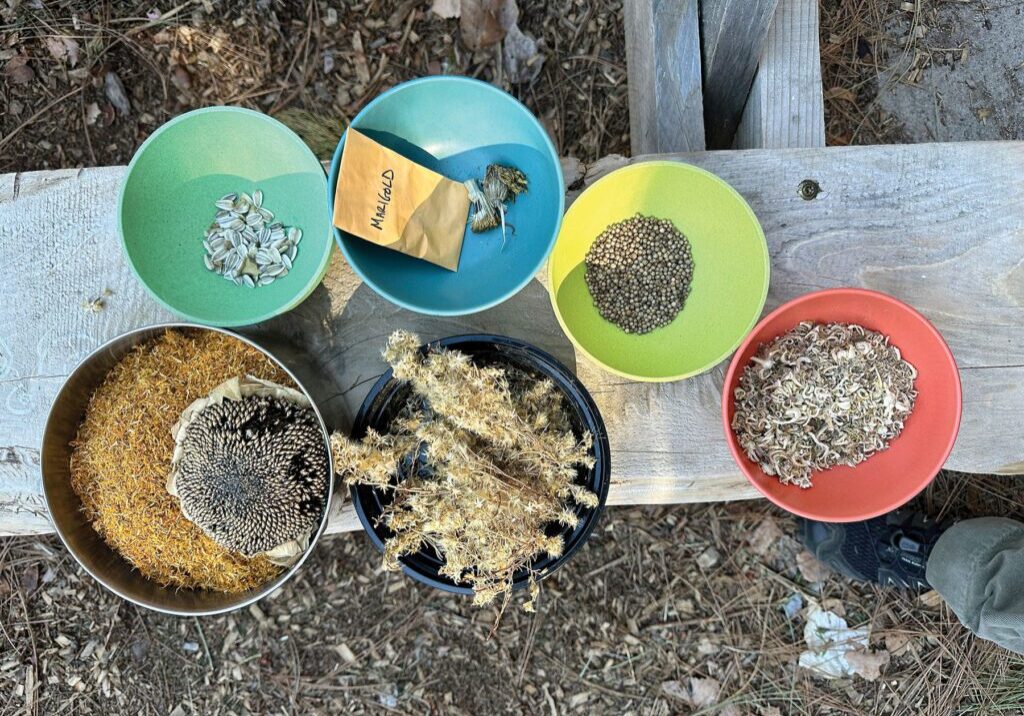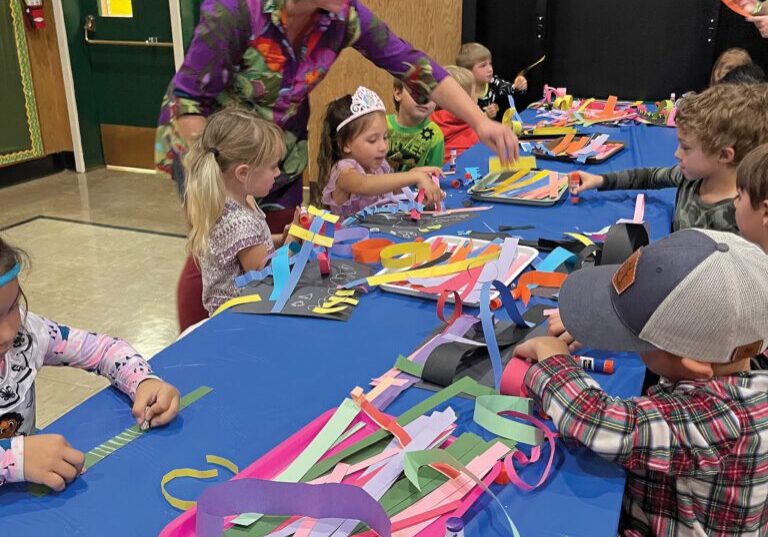Kids may love music, but they don’t always love to practice — and they don’t know the first thing about effective practicing. This is where parents can help. Even if you don’t know how to play the piano, you do know how to learn, how to set up an environment for learning, and how to observe, listen and communicate. Here’s how to apply those skills to help your child on the path to a successful music experience.
Effective practice is the key
Practicing is key to learning to play the piano, but effective practice does not mean doing the same thing over and over again. In fact, mindless repetition can be detrimental if the student simply repeats mistakes.
Parents of young beginners should be sure that they understand the teacher’s practice instructions because many second and third graders will forget what they are supposed to do between the end of a lesson and the beginning of the next practice session. Most teachers write practice instructions in an assignment book. Even so, young children will need help remembering which tasks need to be practiced. It also helps if they practice as soon as possible after the lesson; this helps them remember what they just learned.
Learning to play an instrument is like learning a new language
Marci Pittman, an independent music teacher, teaches piano at CORE Butte Charter School and South Sutter Charter School and is vice president of the Butte County branch of Music Teachers Association of California.
“I encourage my students to develop a habit of getting to the piano five days each week based on what works for their family schedules,” she says. “I give each student a detailed practice plan for their music binders that outlines what they should do for the week between lessons. Learning to play an instrument is like learning a whole new language including Italian terminology, since the language was first developed in Italy. Developing fluency in this language requires regular engagement to make progress and develop the skills for the instrument and fluency in understanding how the symbols on the page translate to playing the instrument.”
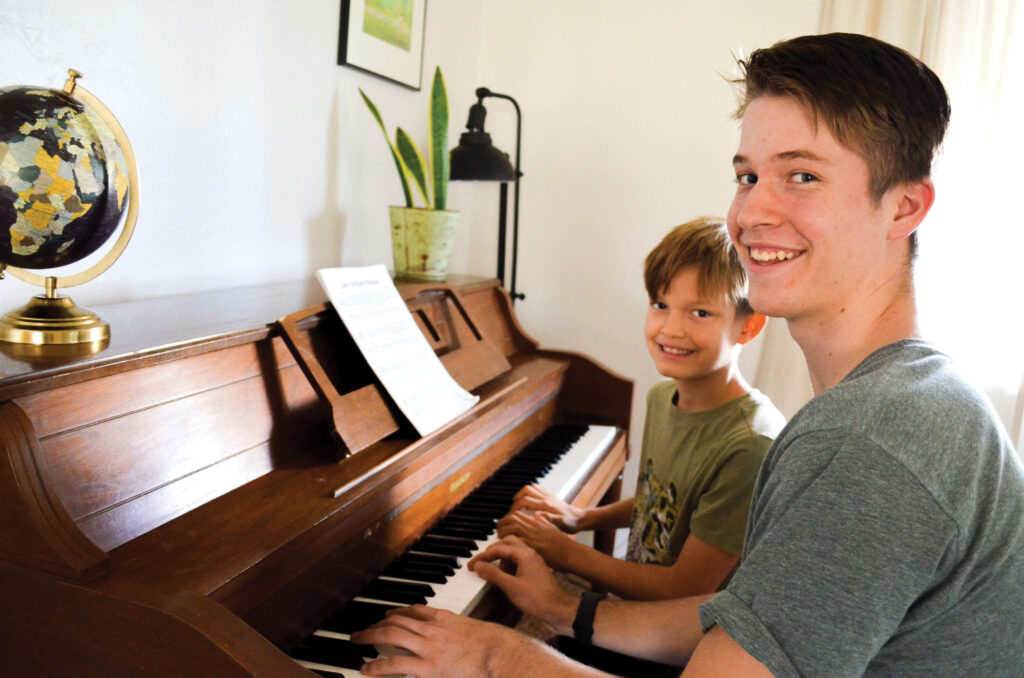
Jack and Tyler Thompson love to show off their new skills to each other. Photo by Jesse Espinosa.
Communicating with the music teacher
Parents can also help by communicating with the teacher. If the teacher does not include practice suggestions or goals in the assignment book, a parent shouldn’t be afraid to ask for suggestions. As children get older and more independent, they may not need or want your help with their practice sessions. But in the first year or two, children who have active parental involvement typically learn more than those who are left to flounder on their own.
Marci says, “With current technology, I encourage early level students to play along with accompaniment tracks for their instrument, once the basic learning of the notes, rhythm, articulation, and dynamics has taken place. Playing with accompaniment tracks requires them to internalize the beat of the music, develop listening skills, a clear understanding of rhythmic accuracy, and is quite fun as these skills develop. This prepares them for playing with other instrumentalists and singers as well.”
Set small and realistic milestones
Kim Davis is a multi-instrumentalist based in California. She is an original member of the “Afro-Peruvian Jazz Orchestra” founded by Lorenzo Ferrero and Anibal Seminario, playing baritone saxophone. She has had a private music studio for the past 15 years and has worked with every age group from elementary kids to retired adults.
In her view, “The goal of practice is to first set small and realistic milestones that the student would like to accomplish. I work with each of my students to write down five easy steps that can be practiced at home every day so the student can reinforce positive habits for a desired outcome.”
She says one of the most valuable things about daily practice is the ability to celebrate mistakes and learn how to alter habits for success. “Students who practice their instrument the same way each day become baffled why their sound or technique doesn’t improve. Simple changes in the approach to their instrument as well as their practice routine will quickly show great results. Positive outcomes in music will not only result in a beautiful sound, but will greatly improve the self-confidence of a student when they hear their sound change and can feel their fingers moving more efficiently from one note to the next. Slow and steady wins the race.”
Music affects the whole person
Says Marci, “The benefits of music study for the brain are immense and much study has been done over the last few decades that has proven this to be true. But even more than that to me is how music affects the whole person, body, mind, emotions, and spirit, and can help a person be well balanced in life. This is especially important concerning the major setbacks that children in particular have been dealt during this period of pandemic restrictions in learning and emotional wellbeing.“
Posted in: Art & Music
Comment Policy: All viewpoints are welcome, but comments should remain relevant. Personal attacks, profanity, and aggressive behavior are not allowed. No spam, advertising, or promoting of products/services. Please, only use your real name and limit the amount of links submitted in your comment.
You Might Also Like...
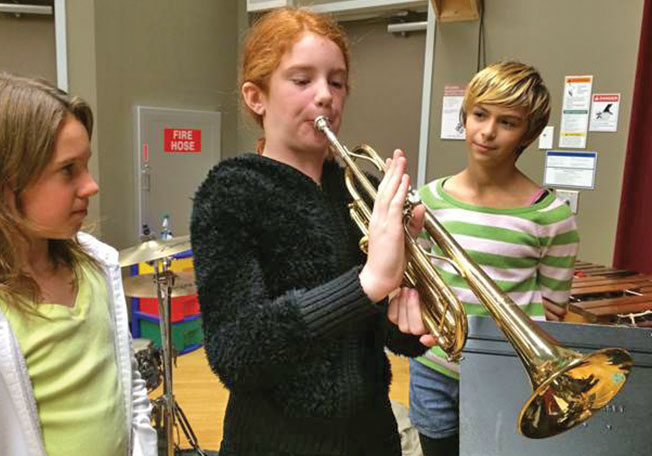
North State Symphony Special Children’s Concerts Include New “Little Ones Concert”
Bring your toddlers along to the theater when North State Symphony hosts a special concert just for preschoolers and kindergarteners this month, followed by the orchestra’s annual concert for older […]
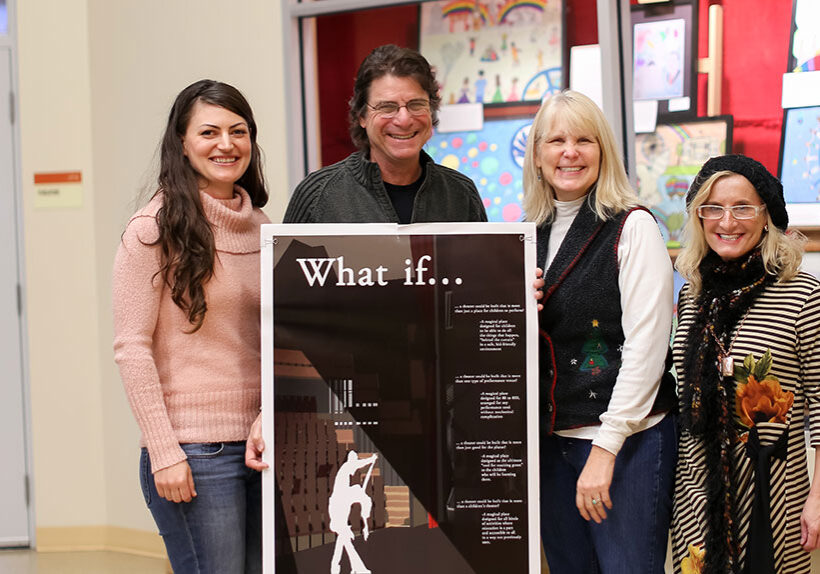
Where Adventure, Dreams and Inspiration Begin – Update on Raven and the Unicorn Performing Art Center
It’s been an exciting year for the Raven and the Unicorn, a proposed 800-seat theater designed specifically for child-centered performing arts programs and educational opportunities. The theater is still on […]

Coloring the Walls with Lacy Wilson
We all need to run away at times, and that urge may be stronger than ever these days. Maybe you want to run to a quiet room, take a drive […]

Practice Makes Perfect: Tips to Help a Child Practice More Effectively at the Piano
As the old joke goes, the way to Carnegie Hall is “practice, practice, practice.” Yet, establishing and enforcing a practice schedule is likely to be one of the biggest challenges […]


